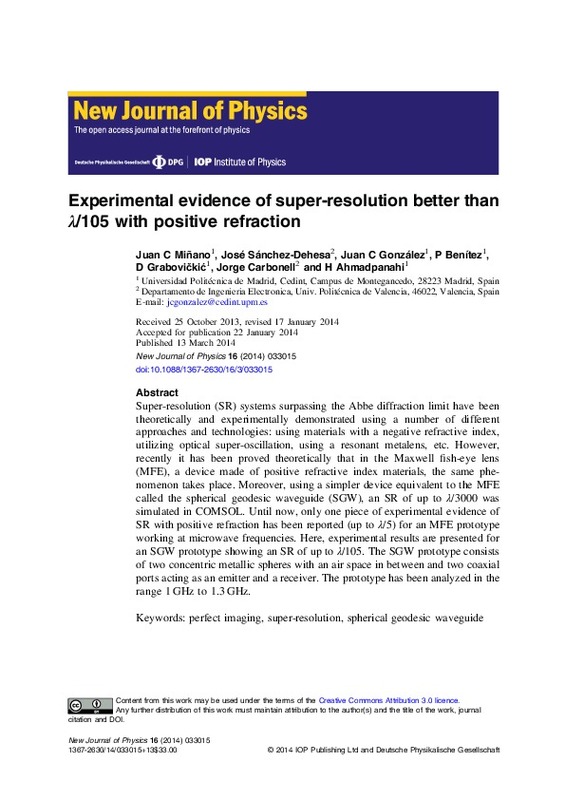Synge, E. H. (1928). XXXVIII.A suggested method for extending microscopic resolution into the ultra-microscopic region. The London, Edinburgh, and Dublin Philosophical Magazine and Journal of Science, 6(35), 356-362. doi:10.1080/14786440808564615
Pohl, D. W., Denk, W., & Lanz, M. (1984). Optical stethoscopy: Image recording with resolution λ/20. Applied Physics Letters, 44(7), 651-653. doi:10.1063/1.94865
Lewis, A., Isaacson, M., Harootunian, A., & Muray, A. (1984). Development of a 500 Å spatial resolution light microscope. Ultramicroscopy, 13(3), 227-231. doi:10.1016/0304-3991(84)90201-8
[+]
Synge, E. H. (1928). XXXVIII.A suggested method for extending microscopic resolution into the ultra-microscopic region. The London, Edinburgh, and Dublin Philosophical Magazine and Journal of Science, 6(35), 356-362. doi:10.1080/14786440808564615
Pohl, D. W., Denk, W., & Lanz, M. (1984). Optical stethoscopy: Image recording with resolution λ/20. Applied Physics Letters, 44(7), 651-653. doi:10.1063/1.94865
Lewis, A., Isaacson, M., Harootunian, A., & Muray, A. (1984). Development of a 500 Å spatial resolution light microscope. Ultramicroscopy, 13(3), 227-231. doi:10.1016/0304-3991(84)90201-8
Hell, S. W., & Wichmann, J. (1994). Breaking the diffraction resolution limit by stimulated emission: stimulated-emission-depletion fluorescence microscopy. Optics Letters, 19(11), 780. doi:10.1364/ol.19.000780
Lemoult, F., Lerosey, G., de Rosny, J., & Fink, M. (2010). Resonant Metalenses for Breaking the Diffraction Barrier. Physical Review Letters, 104(20). doi:10.1103/physrevlett.104.203901
Pendry, J. B. (2000). Negative Refraction Makes a Perfect Lens. Physical Review Letters, 85(18), 3966-3969. doi:10.1103/physrevlett.85.3966
Stockman, M. I. (2007). Criterion for Negative Refraction with Low Optical Losses from a Fundamental Principle of Causality. Physical Review Letters, 98(17). doi:10.1103/physrevlett.98.177404
Kinsler, P., & McCall, M. W. (2008). Causality-Based Criteria for a Negative Refractive Index Must Be Used With Care. Physical Review Letters, 101(16). doi:10.1103/physrevlett.101.167401
Di Francia, G. T. (1952). Super-gain antennas and optical resolving power. Il Nuovo Cimento, 9(S3), 426-438. doi:10.1007/bf02903413
Leonhardt, U. (2009). Perfect imaging without negative refraction. New Journal of Physics, 11(9), 093040. doi:10.1088/1367-2630/11/9/093040
Leonhardt, U., & Philbin, T. G. (2010). Perfect imaging with positive refraction in three dimensions. Physical Review A, 81(1). doi:10.1103/physreva.81.011804
Benítez, P., Miñano, J. C., & González, J. C. (2010). Perfect focusing of scalar wave fields in three dimensions. Optics Express, 18(8), 7650. doi:10.1364/oe.18.007650
Miñano, J. C., Marqués, R., González, J. C., Benítez, P., Delgado, V., Grabovickic, D., & Freire, M. (2011). Super-resolution for a point source better thanλ/500 using positive refraction. New Journal of Physics, 13(12), 125009. doi:10.1088/1367-2630/13/12/125009
Miñano, J. C., Benítez, P., & González, J. C. (2010). Perfect imaging with geodesic waveguides. New Journal of Physics, 12(12), 123023. doi:10.1088/1367-2630/12/12/123023
González, J. C., Benítez, P., Miñano, J. C., & Grabovičkić, D. (2012). Perfect imaging analysis of the spherical geodesic waveguide. Optical Systems Design 2012. doi:10.1117/12.981190
[-]









